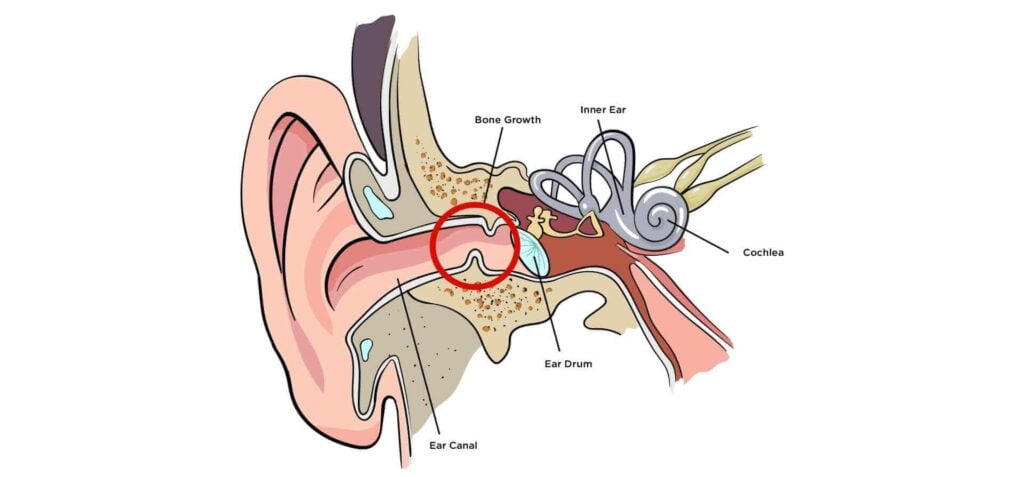No results available
ResetTake a deep dive into what causes surfers’s ear, how to treat it and how you can prevent getting it in the first place.
Surfer’s ear is the development of a bony growth in the ear canal from repeated exposure to cold water and wind.
It can be an unwanted accessory you get from enjoying the cold water, and while symptoms usually appear over a number of years, they can be quite painful and life-changing for some.
In this article, we take a deep dive into what causes surfer’s ear, the difference between swimmer’s ear, how to treat it and how you can prevent getting it.
Surfer’s ear also known as external auditory canal exostoses (EACE) or exostoses is a common condition caused by repeated exposure to the cold and wind.
Despite the name, this condition doesn’t just affect surfers but rather anyone who is regularly in the cold water, including open water swimmers, divers, kayakers, sailors and surfers.
Surfer’s ear is a different condition from swimmer’s ear. It causes a bony growth to develop within the ear, narrowing the ear canal and can lead to hearing loss, infections and blockages if not treated.
Those who swim in water under 20 degrees celsius are at risk of developing this condition as this is when bone growth is stimulated. Although, those in warmer water temperatures are also at risk when you factor in wind chill.
The time it takes to develop surfer’s ear varies from person to person, but it usually develops over time and can take anywhere between 10 – 15 years before symptoms start showing.

Surfer’s ear is a physical condition that may cause infections, whereas a swimmer’s ear is purely an infection.
Surfer’s ear is caused by regular exposure to wind and cold water below 20 degrees Celsius. When the cold water enters the ear canal it swirls around causing the body to respond by warming up the affected area.
This warming response triggers bone-producing cells in the ear canal to produce bony growths which are thought to be the body’s defence mechanism in protecting the eardrum.
While you may remove yourself from cold environments and start swimming in warm water, these growths don’t just go away, they continue to grow over time every time you are in a cold water environment.
There are many symptoms of surfer’s ear, so if you experience any of the symptoms in the list below, it is recommended you visit your GP or ear, nose and throat (ENT) specialist early for treatment.
If you think you have Surfer’s ear, you should consult your doctor and they will examine your ear canal for bony growths.
Treatment for surfer’s ear depends on the severity of it but may include:
Ear drops or antibiotics
If your symptoms are mild you may need to take a course of ear drops or antibiotics.
Surgery
When symptoms become severe such as trapping of debris in the ear canal, loss of hearing and tinnitus, surgery may be required to remove the bony growth from your ear canal. Depending on the severity of the surgery, most patients will need to remain out of the water for anywhere up to six weeks to ensure full healing and to prevent new growths from developing.
To ensure your love of the water and swimming isn’t affected by a case of surfer’s ear, prevention is the best medicine.
The following measures will reduce your risk of suffering from surfer’s ear:
No results available
Reset




Copyright © 1999-2024 oceanswims.com. All rights reserved.
‘OCEANFIT is a registered trademark of OceanFit Pty Ltd.